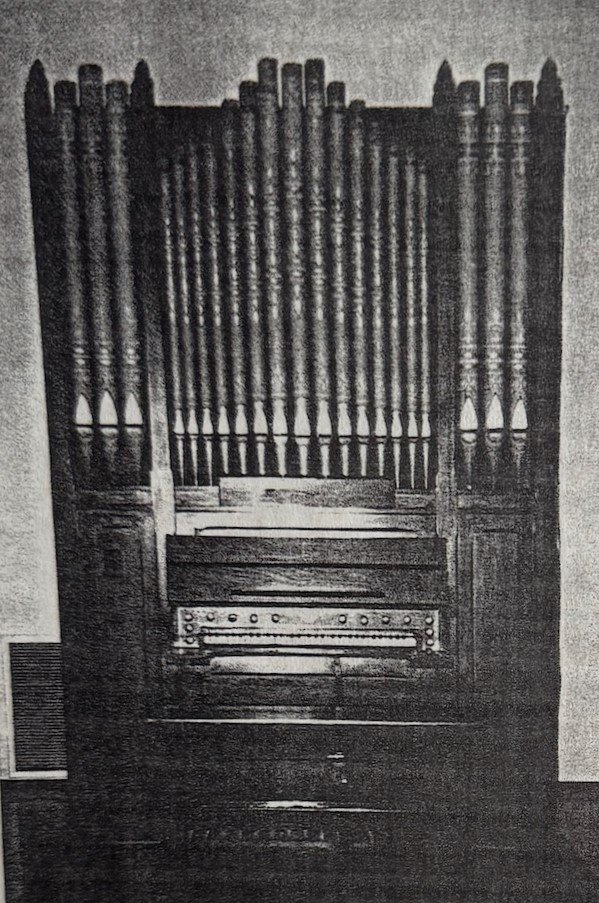The Trinity Organ
The pipe organ that is now found at Christ the King Lutheran Church of Natchitoches, Louisiana has a long and transient history. It was built in 1890 by the Pilcher Bros. firm of New Orleans. Pilcher Organ Company goes back to the mid 1800's, having begun in New York, moved to Chicago, and St. Louis, with one family member moving to New Orleans and establishing the Pilcher Bros. shop about the time this organ was built.
This instrument has a single manual (keyboard) of 61 keys, which activate four ranks of pipes. The pedalboard activates an additional rank of pipes. Its working action is mechanical. When a key is depressed, a system of levers and rods (trackers) is set in motion which eventually opens a valve under a pipe to create the sound. The four ranks of pipes are turned on or off by sliders, which are long thin pieces of wood with holes in them. When these slide into position, holes in the wood sliders and in the wind chest aline to let air flow into the pipe that is being played. A rank of pipes equates with one particular sound of the pipe organ, such as a woodwind or a string in an orchestra. Pipes are made of both wood and metal.
Originally air was supplied to the wind chest in this organ by a hand operated bellows, which was replaced some time ago with an electric motor.
All of the pipes operated by the manual (four ranks) are enclosed in a swell chamber (box) with shutters on the front. A foot pedal opens the shutters about 45 degrees, allowing more sound to exit the pipe chamber. This feature and the number and kind of stops (ranks) chosen by the organist are the only two ways a pipe organist can increase or decrease the volume of sound coming from the organ. A pipe organ has no simple volume control, as on a radio or an electronic substitute.
To add options for the organist accompanying a congregation, modern organs have two or more manuals. The organist can then play different sounds with each manual. An innovation that helps the organist accomplish something similar with an organ such as this one-manual organ, is the split keyboard. Different ranks of pipes can be drawn (turned on) for the bass part of the keyboard than those for the treble part of the keyboard. This helps with responsive parts of the liturgy, such as the psalms and introductory phrases.
This organ also features two couplers. There is an octave coupler for the manual, which allows the organist to play an additional note one octave higher than the note being played. In this way the sound is doubled.
This beautiful instrument in God’s Kindom is awaiting its next operator.
Our services are currently accompanied by piano only.

